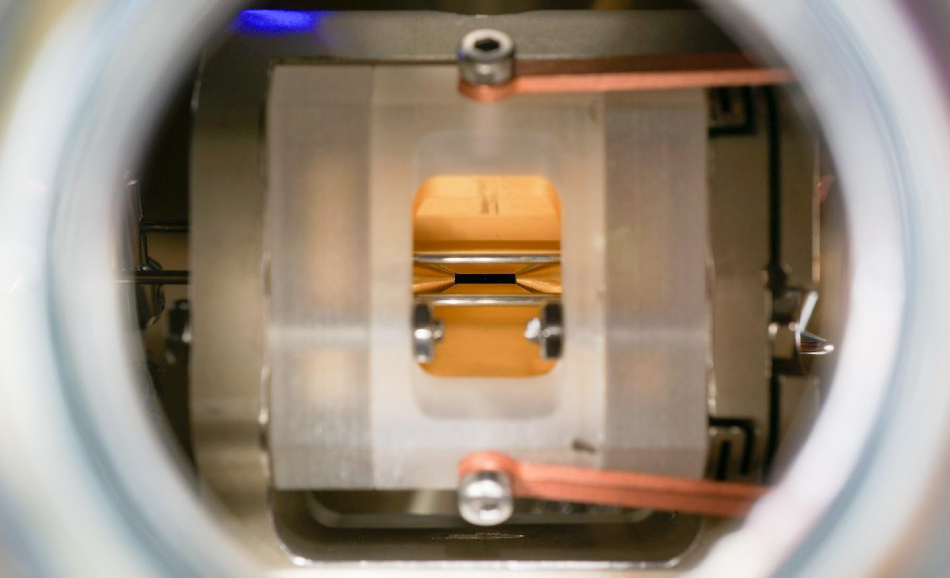Feb 27 2020
One of the unique but central features of quantum mechanics is the change in a quantum system when it is measured. Now at Stockholm University, scientists have successfully demonstrated how this change occurs.
 Strontium ion trapped in an electric field. The measurement on the ion lasts only a millionth of a second. Image Credit: F. Pokorny et al.
Strontium ion trapped in an electric field. The measurement on the ion lasts only a millionth of a second. Image Credit: F. Pokorny et al.
The study outcomes have been reported in an article titled “Tracking the Dynamics of an Ideal Quantum Measurement” published in the scientific journal Physical Review Letters.
Quantum physics characterizes the inner realm of individual atoms, a world that differs very much from the day-to-day experience of humans. The role of the observer—quantifying the state of a quantum system such that it changes—is one of the several peculiar yet basic aspects of quantum mechanics.
Although this measurement process is considered significant within the theory, it still includes unresolved questions: Does a quantum state tend to collapse instantly while performing a measurement? Otherwise, what is the time needed for the measurement process and what is the system’s quantum state at any intermediate step?
A collaborative team including scientists from Sweden, Spain, and Germany has resolved these questions by using a single atom—a strontium ion trapped inside an electric field. The measurement on the ion lasts only a millionth of a second. The researchers produced a “film” including images captured at different instances of the measurement, demonstrating that the state change occurs slowly under the measurement impact.
Superposition Preserved
Atoms obey the laws of quantum mechanics, usually contrary to normal expectations. An atom’s internal quantum state is produced by the state of the electrons that can revolve around the atomic core in an orbit close or further away. But quantum mechanics also permits the so-called superposition states, in which the electron occurs in both orbits at the same time, but only with some probability in each orbit.
Every time when we measure the orbit of the electron, the answer of the measurement will be that the electron was either in a lower or higher orbit, never something in between. This is true even when the initial quantum state was a superposition of both possibilities. The measurement in a sense forces the electron to decide in which of the two states it is.
Fabian Pokorny, Researcher, Department of Physics, Stockholm University
The “film” reveals the evolution that happens during the course of the measurement. The individual images unravel tomography data in which the height of the bars divulge the superposition degree that is still preserved. There is a loss of some of the superpositions while the measurement is performed—where the loss occurs gradually—while other superpositions are conserved as they should be for an optimal quantum measurement.
Important for Quantum Computers
These findings shed new light onto the inner workings of nature and are consistent with the predictions of modern quantum physics.
Markus Hennrich, Research Group Leader, Stockholm University
These study outcomes are also significant beyond fundamental quantum theory. Quantum measurement is a vital aspect of quantum computers. The research team at Stockholm University has been focusing on the development of computers based on trapped ions, in which the measurements are used to read out the result as a part of a quantum calculation.